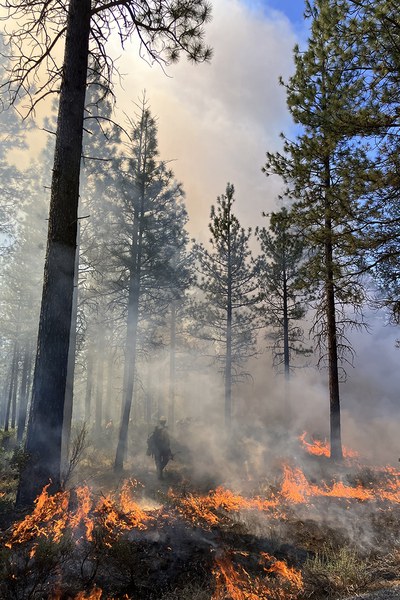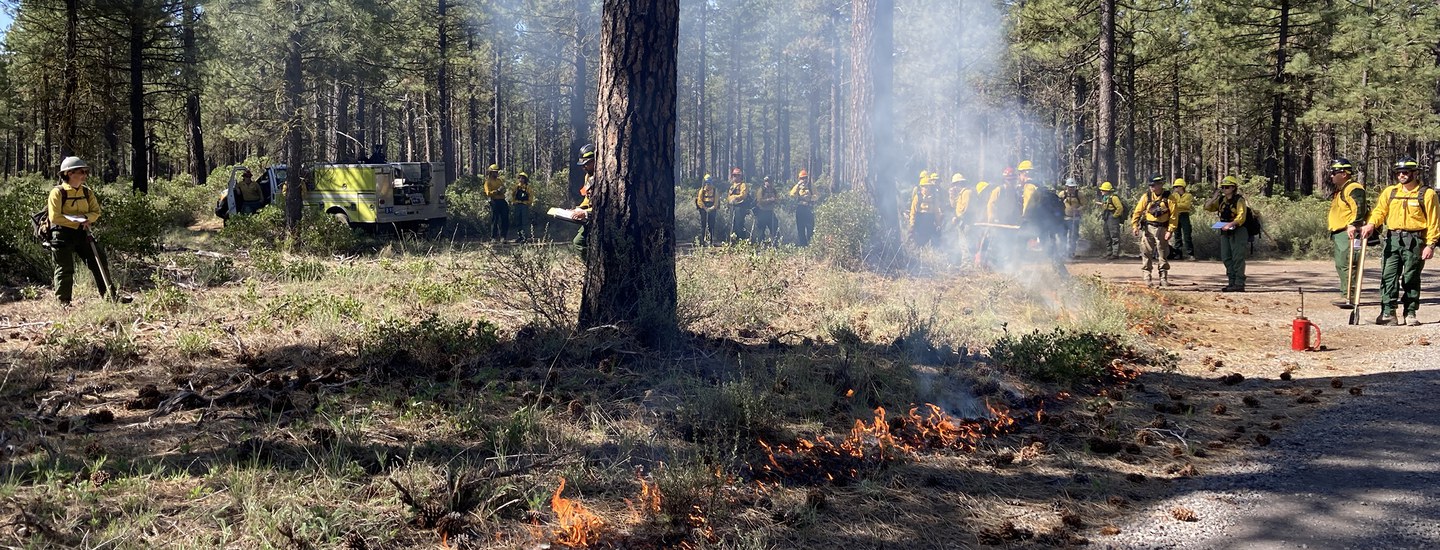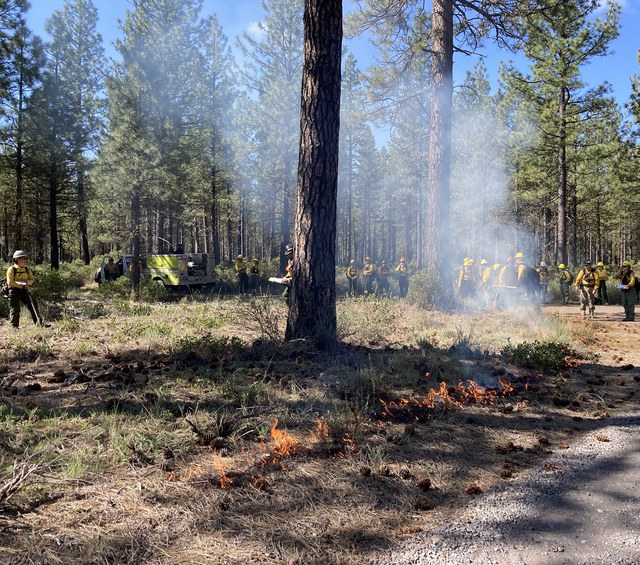Healthy forests, diverse native plant communities, and thriving wildlife are a few of the habitat goals the Land Trust is working towards at our Metolius Preserve near Camp Sherman. How do we get there? One of our tools is prescribed burning.
Prescribed burns are planned fires that mimic natural fires. They are forest management tools that are carefully planned for and managed. Central Oregon’s forests benefited from fire for thousands of years. In fact, the removal of fire during the last hundred years has shown us exactly how important fire is. Small, regular low-intensity fires have been replaced by large catastrophic ones that make it harder for our forests to recover.

Much of the Metolius Preserve was selectively thinned in the last 20 years to create patches of widely spaced trees intermixed with denser clumps of trees and gaps with few trees. The resulting mosaic pattern of "gappy, patchy, and clumpy" mimics nature: forests of mixed-age trees with a variety of habitats for wildlife. When fire was removed from the forest, these naturally-occurring areas disappeared, leaving a more uniform forest. The reintroduction of prescribed fire helps maintain and create mosaic patterns for the forest.
Using prescribed fire to create a healthy forest also helps protect local communities from future catastrophic fire. With layers of duff removed, sick trees gone, and a mosaic forest pattern, there is a reduced risk of high-intensity wildfire.
The 2025 prescribed burn at the Metolius Preserve was completed in conjunction with our partners at the Oregon Department of Forestry, Deschutes National Forest/Sisters Ranger District, and The Nature Conservancy. The burn occurred in the northern section of the Preserve, where we completed a mowing operation in 2023 in anticipation of the prescribed burn. After developing a burn plan and schedule that aligned with the prescribed burning of immediately adjacent Deschutes National Forest land, we were able to complete the prescribed burn in May 2025, reintroducing fire to 50 acres of the 1,240-acre Metolius Preserve.
Recently burned forest can look blackened and damaged. However, since these forests are naturally adapted to fire, they are able to recover quickly from prescribed burns. The Land Trust will be monitoring the changes that the Metolius Preserve forest goes through, and we'll share first-hand the effects of the prescribed burn.
Forest restoration and prescribed burning are key parts of returning health and climate resilience to the Metolius Preserve. We look forward to seeing a thriving forest once again!
Huge thanks to our partners at the Oregon Department of Forestry, Deschutes National Forest/Sisters Ranger District, and The Nature Conservancy for making this prescribed burn possible!
Learn more:
- Metolius Preserve Forest Restoration
- Forest restoration and carbon storage at the Metolius Preserve
- East Cascade Dry Forests and their historic conditions


